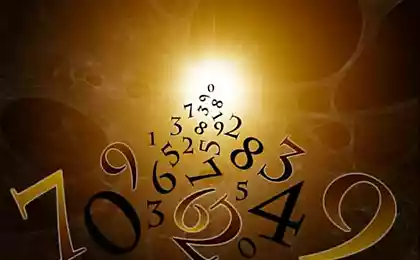1153
New Year

There are many legends about the Christmas tree associated with the spirit or the place where the spirit lives, and - with the legends of the Tree of Life and the Tree of Knowledge of Good and Evil. hero of the most popular legends became the leader of the German Reformation, Martin Luther. One Christmas Eve he was walking home through the woods. The night was clear and starry. When he came home, he set up a Christmas tree for your family and a lot of candles stuck to its thick branches. Lights on it looked like stars in the sky.
There is a legend about why we decorate the Christmas tree shiny silver tinsel:
Once upon a time there lived a good poor woman, who had many children. Night before Christmas she had dressed Christmas tree, but it had very little jewelry. Night on the tree visited spiders and crawling from branch to branch, left on its branches web. As a reward for kindness female infant Christ blessed the tree, and the web has become a shining silver.
There is a theory that first invented Santa Claus Huns: they had a god Yerli, which is the first day of the year came to earth. This day was supposed to put a Christmas tree in their homes, as the Huns fir tree was considered sacred. It turns out, therefore, that this tradition has 5000 years. Huns and brought it to Europe. Then they were crushed and were only in Bavaria, where he lived until the XVI century, no one mixing. It was a Bavarian Christmas tree "come" to all European countries.
Widely installed in homes Christmas trees began relatively recently - in the 19th century. It was then that evergreen, lush ladies became regularly established in the royal and royal palaces of France, Germany, England, Norway, Denmark and Russia. Property as commoners tree was only in the second half of the 19th century.
In Russia, the New Year has been celebrated by Peter the Great from 1 January 1700. Prior to that mark the beginning of the new year on September 1st. The decree of Peter I said: "As noble and carriageways streets and houses at the gate to inflict some ornaments from trees and branches of pine, spruce and juniper, to repair the firing of small guns and rifles, lobbing rockets and light fires. And poor people each at least on a tree branch or on the gate to put. " This holiday Christmas tree (although under Peter the Great did not decorate the Christmas tree and decorated legs, twigs), decoration and carnivals are very fond of the Russian people.
In the 30s of the XIX century trees were placed on a holiday only in the homes of the St. Petersburg Germans. Public in the capital of the Christmas tree is put only in 1852. By the end of the XIX century became the main decoration of the Christmas tree and urban and rural houses, and in the XX century became inseparable from the winter holidays. But in 1916, Christmas trees on Russian soil in disfavour. As during the war nobility abandoned the language of Napoleon, as the imperialist Holy Synod urged not to put the Patriots in the homes of thorny trees, because they came to us from the German traditions.
In 1918, on the tree took up arms against the Soviet power - but as bourgeois prejudice. In the Christmas tale was no Santa Claus, no winter mermaid Maiden - virgins missed first trimester waters. Only one religion: Nativity Scene, Star of Bethlehem, the choir of angels and divine miracles sent only to the good children. However, many continued to celebrate Christmas in secret. The stern fact remained pagan tradition - caroling at Christmas time.
Tree remained banned until 1935, when the idea: do not celebrate Christmas and New Year. Star of Bethlehem was the five-pointed red, and under the trees ornate country by order of Stalin along with Santa Claus met in 1935 after Christ. But on January 1 became a day off only in 1949.
In general, the tradition of decorating the Christmas tree is very old, more than 2,000 years. Previously, people thought that all trees are endowed with good strength, that they live the good spirits. People tried to appease these spirits, hanging on the trees treats and gifts. Evergreen fir trees of all occupied a special place: it was a sacred center, "world tree", symbolizing life itself and the new revival of the darkness and gloom. Previously, instead of toys hung on the trees fruits of various trees such as apples - a symbol of fertility, nuts - incomprehensibility of the divine Providence, eggs - a symbol of evolving life, harmony and complete well-being.
In England at the court of Henry VIII in 1516 was exhibited tree made of gold, decorated with roses and pomegranates. And before that in England in the run up to Christmas (this custom has survived to this day) was made to decorate the house with holly (thistle), ivy and mistletoe (honeysuckle).
In the Midlands it was thought that if the first branch of holly, entering the house, would barbed - within one year prevail in the house to be the owner, and if the leaves are smooth - mistress. It was believed that holly witch scares.
The custom of kissing under the mistletoe branch also originated in England. Whenever a young couple kissing under a branch, the young man tore a berry; when the berries are ended, and ended with kisses. Now when decorating rooms bunches of mistletoe is even on lamps and lyusrah, and, as usual, you can kiss a man standing in the middle of the room under a bunch of mistletoe.
In Scandinavian countries, the mistletoe is the protagonist of the New Year holiday. Its branches are typically coated with red and "silver" paint, hang them stylized image of two hearts and ribbons adorn.
In France, Napoleon's brother Jérôme Bonaparte I, being the king of Westphalia, dress up a Christmas tree with gift bright letters, and his court-favorites had to shoot them. The first tree was established in France in the Tuileries Gardens. Until now, in France, in Provence on the Christmas tree tradition hang brightly painted eggshells.
























